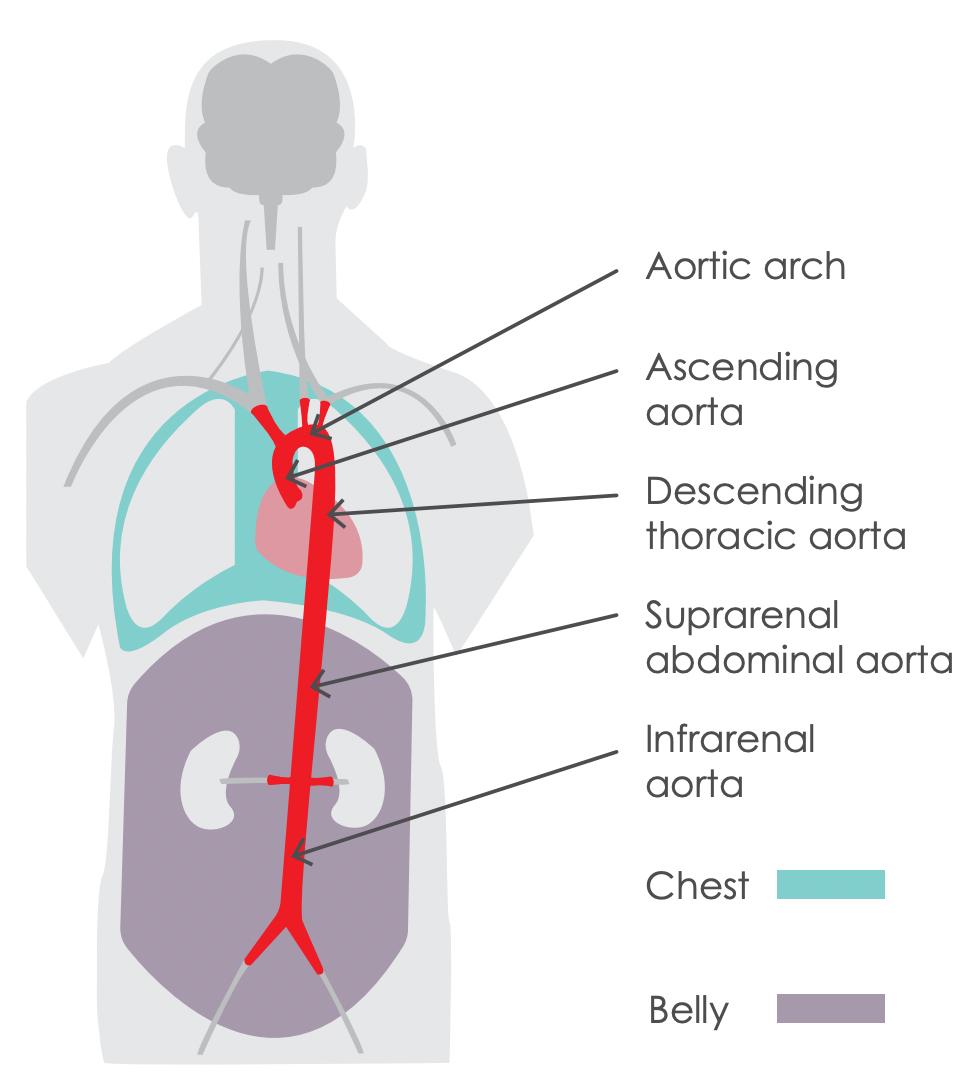Aorta 101
- siths375
- Sep 5, 2023
- 3 min read
Updated: Sep 18, 2023
Good morning everyone! Thank you very much for joining us for another amazing day of #AorticDiseaseAwarenessMonth! My name is Adham and I am a third-medical student at CUNY School of Medicine. Along with my good friend Duc, we will be helping out with some of the educational posts this month.
We are going to start off today with a nice review of the Aorta!
If you have not done so already - please be sure to download your FREE COPY of Aortic Dissection: The Patient Guide HERE and refer to pages 13-15 for today's post.

Page 13, #AorticDissection Patient Guide
Overview
The Aorta is the largest artery in our body and an integral component of our cardiovascular system. Its function is to take blood that has been oxygenated by our lungs and deliver it throughout our body helping to perfuse every major organ in the body, including our brains, abdominal organs, kidneys and other tissues.
The aorta is a resilient but flexible vessel, with elastic smooth walls that allow it to widen and contract as blood travels through in different volumes. It is often divided into three major sections including:
The ascending aorta, which begins at the level of the aortic valve
The aortic arch, where it takes a "cane-like" turn and starts to curve downward
The descending aorta where it starts to travel down through your chest and abdomen to reach the lower half of your body
Keep these divisions in the back of your head! We will refer back to it as we start to discuss some of the different diseases that can occur throughout the aorta and their treatment.
Layers

Page 14, #AorticDissection Patient Guide
One the cool parts of the aorta is that it can be divided into three layers when looking at a cross-section.
Tunica Intima: this is the innermost layer where blood passes through. It contains special "endothelial" cells which help it move nutrients and blood. Think "intima" for "inner-most"
Tunica media: this is the middle smooth muscle layer which has elastin and collagen protein and helps provide strength and flexibility to the aorta. Think "media" for "middle"
Tunica adventitia: this is the outermost layer which helps anchor the aorta to surrounding structure.
Knowing this layers will be very helpful as we discuss some of the disease that can affect the aorta including aortic dissections and aortic aneurysms.
Aortic Valve
Another super important consideration when discussing the aorta is the aortic valve.

https://www.heart-valve-surgery.com/aortic-stenosis-valve-heart-narrowing.php
This valve is responsible for opening and closing as the heart pumps and helps prevent blood from leaking back into the heart.
You might hear your doctor describe the aorta as "tri-leaflet" which refers to the three flaps that open and close as the heart beats. Do be mindful however! Some people are born with aorta that only consist of two leaflets "bicuspid" or one leaflet "unicuspid" aortic valves, which often require monitoring and correction to help the heart function normally.
Two common diseases that can impact the aortic valve include
Aortic stenosis: where the valve becomes too "tight" making it hard for blood to leave the heart
Aortic regurgitation: where the valve becomes too "leaky" causing some blood to leak backwards with every pump adding strain to the heart.
And that wraps up this today's session!
Be sure to check out some of these links for more information about this incredible vessel:
Join us back here tomorrow as we discuss thoracic abdominal aneurysms (TAA). Have an incredible day with your family and loved ones and remember to always #ThinkAorta!
Talk soon friends,
Adham









Thank you Adham & Duc…. This is a fantastic article!!!!!